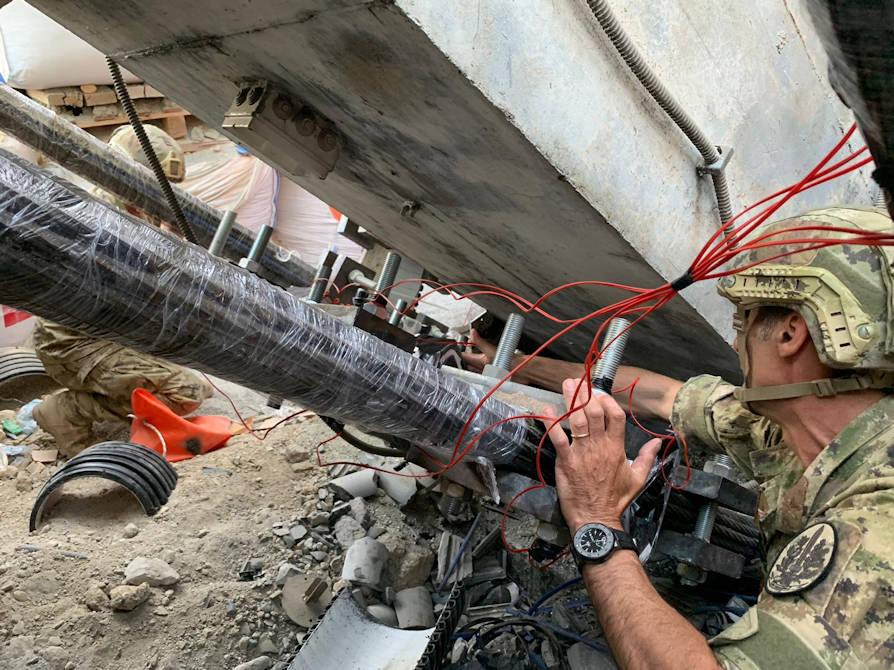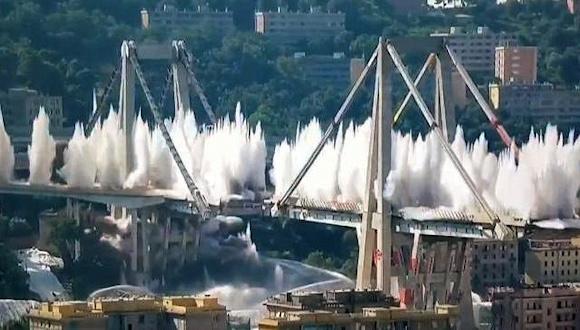The 9 incursors of the Col Moschin Assault Regiment, last 28 June, provided a decisive contribution to the removal of the stumps of the Genoa bridge, still standing after the collapse of 10 months ago.
The intervention of the special forces proved to be indispensable, as it was necessary to limit - given the location of that part of the bridge in a densely inhabited area - the effects of overpressure waves and the propagation of cement splinters.
The Ninth has - as an incursion unit - a vast experience in the destruction of infrastructures and bridges, among the main objectives of the direct actions of the special forces.
Compared to the remaining sections of the Genoa bridge, the raiders could have used hemispherical hollow charges, blocked, at the desired height, by special belts. In this way, reinforced concrete piers can also be removed
Demolishing a bridge (or what remains of it), or a viaduct, is certainly not easy, as they are built to withstand various stresses. In fact, not only is the energy produced by the explosion important, but also where it is addressed.
The explosion, therefore, should take place as close as possible to the supporting structures, for this reason, in bridges built in masonry, a cavity is formed inside them in order to place the demolition charges. On the other hand, all-metal bridges are relatively simpler to mine because the metal structures are all easily accessible.
A team of raiders, charged with destroying a bridge as part of a special mission, certainly cannot have much time available, for which special cutting charges have been studied (in practice they are hollow charges to be placed in the sensitive points of the structure, connected to a detonating fuse that ensures the simultaneous explosion of all the charges).
Obviously, the larger the structure to be demolished, the more powerful the charge must be: there are sharp charges constituted by a pyramid, they are triggered in the upper vertex and are equipped with small supports that ensure that the explosion occurs at the right distance from the surface. A bit like in the case of vehicle armor perforations, the charge concentrates most of its energy over a small area.
In the case of the remains of the Genoa bridge, the demolition phase developed over 6 seconds, and 500 electronic triggers, 5.000 meters of detonating fuse and over 500 kg of semtex were used.













